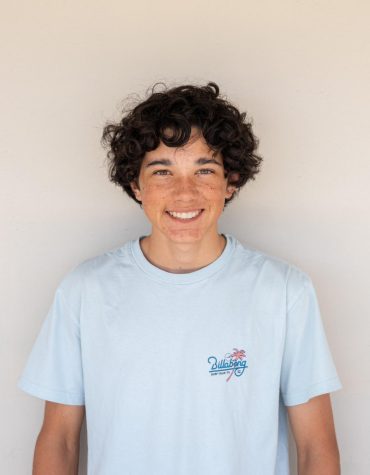Lunch Line Alterations Bring About Conflict
Campo lunch line protocols have undergone a massive shift. While students used to be able to get as many meals as they wanted, they are now limited to 2 a day. In theory, having students scan their ID cards (or give their 400 number) before each meal allows the school to conserve more food. However, this new system has caused many students to complain about how long and slow the lines are now.
Sophomore Nolan Paul explained that with the new ID scanning system, “If you don’t know your number, you can scan your card and still get food, which is really helpful.” He further explained that some of the disadvantages include “only being allowed to get food twice” and “always having to bring your card…which takes a little longer for you to get your food.”
With students having to find their ID cards, pull them out, and scan/read them off, lines take much longer and get backed up easily, leading to more students cutting the lines and having a significantly shorter lunch period.
Sophomore Sebastian Cazares explained a downside of the new lunch line rules: “The lines are way too long, so they just should make scanning quicker. Some people just read off their number, which takes forever… Or just don’t have scans [at all], to make it faster.”
When asked about the limited scanning, senior Josh Batra said, “It’s nice because people don’t take more than 1 piece of pizza. Last year, when the school didn’t have a scanning system to check if you had already gotten food, sometimes there wouldn’t be enough for everyone.”
Batra added, “I think that 3 [scans] would be better, so students could get 1 before school and 2 during school hours.”
Especially for students who don’t always grab food before school, added scans and efficient lines are ideal. A good breakfast snack enables students to perform to the best of their ability in all their classes.
With the lunch lines being a crucial part of school for a lot of students, a scan for breakfast, brunch and lunch would receive a large approval. However, seeking to ensure they have enough money to supply students with food for the entire year, the district is sticking with the 2 scan protocol.
Balancing the speed of the lunch lines with sustainable costs poses a difficult question: Should the District proceed with its new scanning protocols, or listen to students’ complaints? While making scanning a requirement conserves food by limiting the number of line-cutters, it slows the line down significantly, which may be a price students are unwilling to pay.
Your donation will support the student journalists of Campolindo High School's The Claw. Your contribution will allow us to produce more issues and cover our annual website hosting costs.

In 10 years time, sophomore Owen Ludwig would like to be “somewhere big, working hard and making money”.
Ludwig, ever the sports enthusiast, is...
